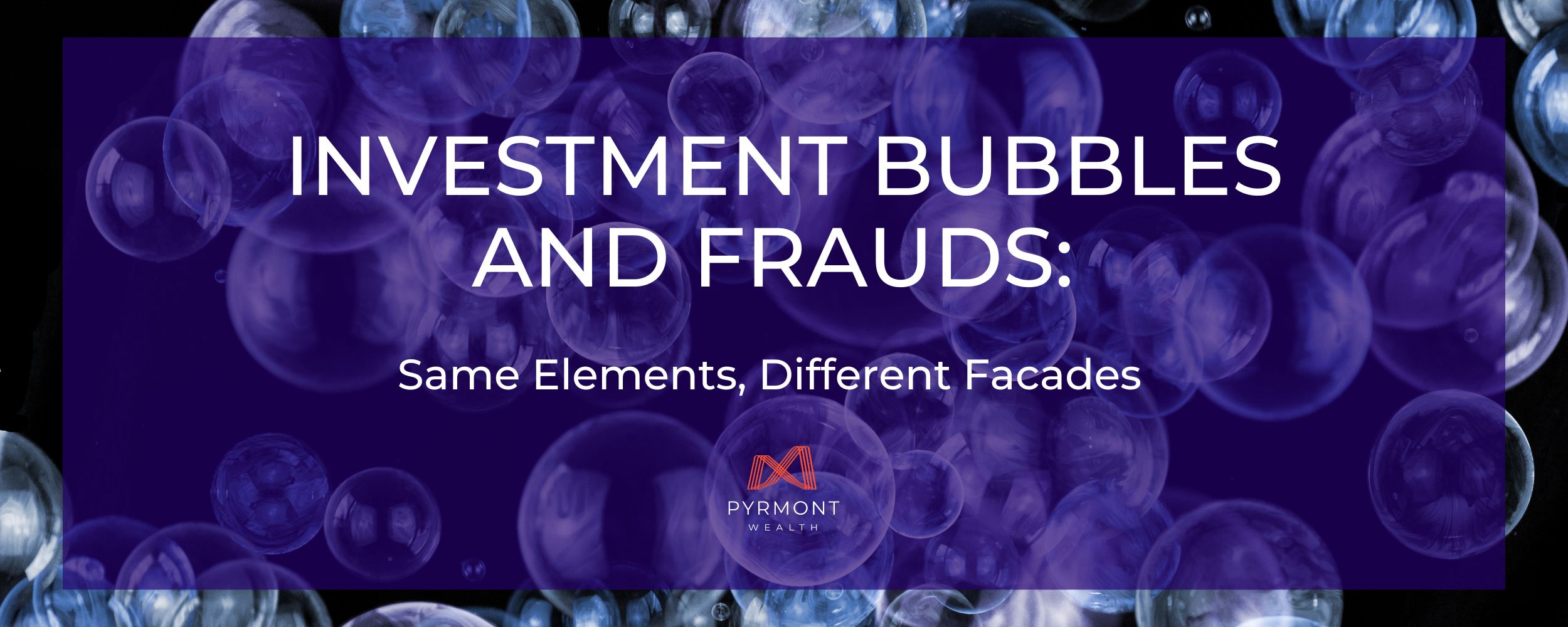Investment Bubbles and Frauds: Same Elements, Different Facades
There are two kinds of bad investment decisions. The first is a slow loss of value, and the second is a sudden collapse. The first scenario is marked by an unexpected loss of wealth caused by high fees or an obsessive focus on performance. In the end, this situation leads to a big loss of money. The latter, a sharp drop, was caused by putting too much money into an investment that was either not good or was fraudulent. Rapid losses are far more dramatic and are often a result of us having our investments unnecessarily concentrated in an asset class, fund or scheme that suffers a savage and irrecoverable decline.
INVESTMENT BUBBLES VS. SCAMS
Although investment bubbles and scams are different, they have something in common: they both take advantage of the same weaknesses in investors by telling a story of promise, giving short-term profits, and getting people to participate based on other people’s behaviours, social proof or their desire for acceptance.
Bubbles happen when investors don’t fully understand something. This leads to a distorted view of reality and an irrational rise in asset prices. On the other hand, frauds are a type of deception that is planned and done by people who want to take advantage of others who are too trusting. But the success of a bubble or a scam depends on the same aspects: a story that draws people in, returns that seem too good to be true, and the illusion of social proof. They keep going up and down until they die, leaving behind broken dreams and lost money.
Let’s look at each one individually:
A promising story
In the world of investments, the ability to persuade is a powerful tool. An interesting story can distract us from the truth of a situation and hide the complexities of an opportunity. These stories, which are often made by charismatic people who are often at the forefront of scams, promise us quick money and encourage us to ignore the risks and problems that may be involved.
Performance: Strong Past Returns

Strong past returns are also a vital feature of the most dangerous bubbles and frauds. Oftentimes, investors look at past returns, evaluating how well an investment has done, because it provides validation – we are so biased towards past outcomes that stellar recent performance is taken as a sign that something is being done right – otherwise why would it be working so well?
Previous returns also persuade us to believe that high returns from the past will continue into the future, which is not always true. As we commonly say in any investment risk warning, past performance is never indicative of future results!
Strong Past Returns also foster greed because investors naturally gravitate towards high profits that have been delivered in the past, they question “boring” more stable investments, and have a sense of fear to miss out on any opportunities for growth.
The Illusion of Social Proof
But social proof that comes from the choices and actions of others may be the most powerful influence of all. It can make us feel more confident because we think that if other people have invested, it must be a safe choice. On the other hand, it can make us feel envious when we see other people making money off of investments we didn’t make. It’s a reminder that we shouldn’t let other people’s opinions change our minds. Instead, we should always put our own research and hard work first.
A Deceptive Interplay of Fraud Elements
When story, performance, and social proof work together, they do a delicate dance in which each part feeds into and strengthens the other two. When backed up by the actions of others, a story that is already compelling because it has led to impressive results can become even more convincing. This positive feedback loop has the potential to be very effective because it can get more and more people involved and give them a sense of progress and inevitability at the same time.
But this cycle can also be broken, which would upset the delicate balance between the different parts and make the circle keep going on its own. Most of the time, it’s hard to know what will cause this change. It could be a revelation that breaks the story, or it could be a period of bad performance that leads to scrutiny, doubt, and, in the end, collapse.
Bubbles and scams go hand in hand, which makes it hard to tell where one ends and the other begins. The most dangerous thing happens when a scam turns into a bubble, which is when the investors’ happiness starts to stick to a dream instead of reality.
But the worst thing that can happen to an investor is to lose not only their investments but also their trust in themselves and their ability to make good decisions.

